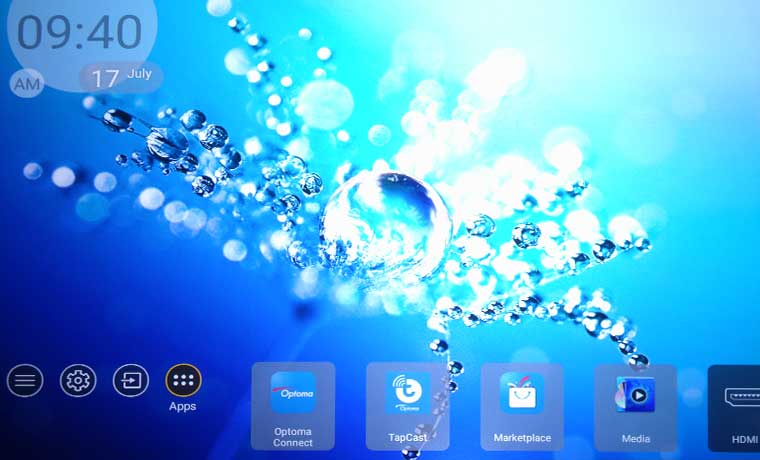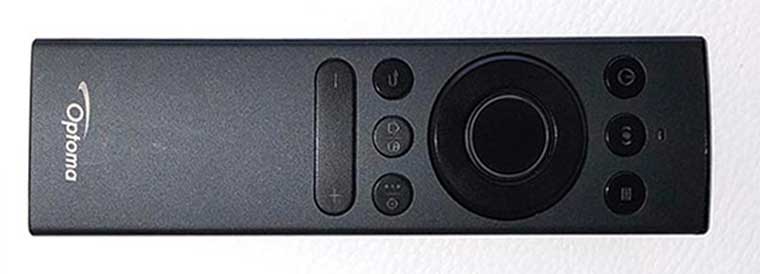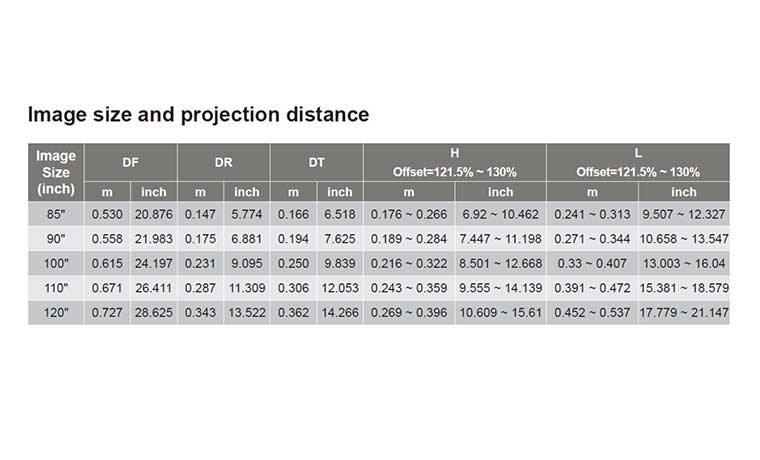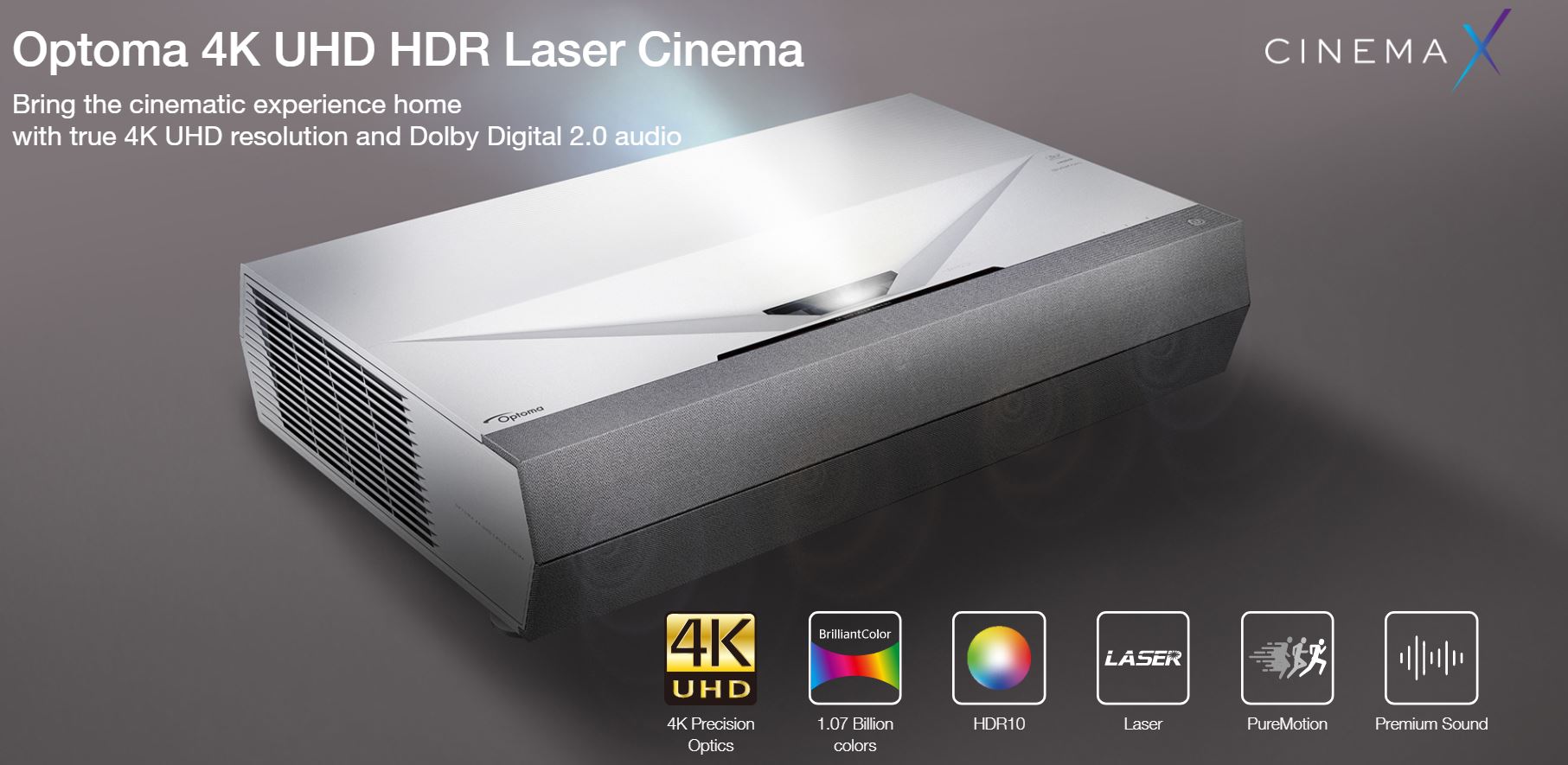OK, below, one man's opinion of how BenQ's W7000 projector stacks up to some of the top competition
Boy, are these two totally different projectors. The Panasonic PT-AE7000 (click for review) is a relatively elegant projector designed to work best in a dedicated home theater or similar space, while the BenQ W7000 is a sheer brute offering massive amounts of brightness compared to most other projectors and still doing it with a very good picture.
Let’s take a closer look.
While the BenQ W7000’s placement flexibility is actually very good with a 1.5 to 1 zoom and lens shift, it’s no match for the Panasonic 2:1 zoom, also with lens shift, and the addition of Lens Memory capability. What this means to you is that the Panasonic will place better in more rooms, although the BenQ should work fine for probably 95 percent of the people out there.
The other key thing about the Panasonic in terms of placement though, is its lens memory feature. This gives you an easy, and affordable way (if you are a movie fanatic first), to go with a true widescreen - a cinemascope aspect ratio screeninstead of 16 by 9 HDTV shape. If that option is attractive to you, that's a strong reason for choosing the Panasonic PT-AE7000 projector.
The BenQ is a DLP projector while the Panasonic uses 3LCD technology. This makes some real differences in terms of how the image looks, but neither technology is superior in all ways and there are great projectors using each. Both of these projectors have dynamic sharpening features. Both of them have creative frame interpolation for smooth motion. Both of them have dynamic irises to enhance black level performance. In that regard, the machines are very similar in terms of feature sets. I will note that the BenQ also has a split screen function while the Panasonic does not.
The largest single difference, however, is brightness. The BenQ W7000, fully calibrated (if you have brilliant color on), is as bright as the Panasonic in any mode, and the BenQ W7000 is more than twice as bright as a calibrated Panasonic.
Overall, the BenQ W7000 is simply the brightest 2D projector designed for home theater that we’ve seen under $10,000, perhaps ever. This makes the BenQ W7000 ideal for those of you who want really large screens and have the room for them. I’m talking 110 and up! Even 120, 130, 140, 150 inches, and you can put a calibrated image up there and have it fill that screen with plenty of brightness.
That’s something the Panasonic cannot begin to do since it offers you around 600 lumens instead of around 1,700 lumens calibrated. Which to buy? That’s going to be a personal call here. Both have a really strong picture. No question about it. The Panasonic is subtle. Okay it’s a very good movie projector for the cinema fan despite the fact that most of those people do like DLPs. On the other hand, the BenQ, between its brightness and DLP technology has "pop and wow" coming out the wazoo! It’s a projector that simply dazzles. Although its not the right expression, "rough around the edges", tends to come to mind compared to the Panasonic. This is due to no particular fault on the W7000, more that the Panasonic simply tends to be one of those “I’m really not there” kind of projectors. Just getting a picture up to the screen for you to enjoy. Whereas the BenQ is more of “Hey how do you like this picture huh” kind of projector and quite honestly does a really good job doing that. The final decision is going to be up to you. I don’t think you can go wrong with either projector from a performance standpoint.
Other thoughts - the Panny is fairly quiet, not so the BenQ which is fairly noisy at full power (similar to the Epson 5010 in fan noise).
For those of you rainbow - RBE - sensitive, the BenQ's not bad for a DLP. A better wheel speed/segment combination than most less expensive projectors but a 4x wheel, nonetheless. For the most part, I'm not seeing rainboows, but every once in a while - on the right scene (or if I move my head on some other scenes), I become aware of the rainbows. Best I can tell, I'm about average in terms of sensitivity toward RBE - of those who see the rainbows at all. Most of you are lucky, and have never seen one.
BenQ W7000 vs. Optoma HD8300
This comparison is much simpler than the other two. Both are DLP projectors. Both start off with an inherently very nice picture, a lot of "pop and wow" factor typical of DLPs. However, I have to side with, and recommend, for most people, the BenQ.
The BenQ is simply much brighter than the Optoma HD8300 (click for review), whether both are calibrated or not. Calibrated, with Brilliant Color on, the W7000 is still brighter than the HD8300 in its brightest - and ugliest mode.
In terms of black levels, the Optima HD8300 will win that battle but not by a great deal, falling probably about half way between the W7000 and the Epson 5010's performance, and I believe they are close enough that that’s not going to be a big factor. Still, it is one to consider if you are, like me, a black level fanatic.
The BenQ W7000 is, however, when you need it - more than twice as bright when both are calibrated. It costs a good thousand dollars less. Note that the Optoma warranty is definitely superior - three years vs. one year. While I have stated that the HD8300 inherently has a fairly refined picture I’ve also picked on it for not having a particular smooth iris function. So when it comes to rough edges, I’d actually have to say that the BenQ has the less of them.
Whether measuring Bang for the Buck, or just the amount of Bang, the W7000 is going to come out as the better value of these two projectors. Still, in a smaller environment, the HD8300 makes a solid DLP projector.
BenQ W7000 vs. Sony VPL-HW30ES
I think the HW30ES is a really nice projector. As I mentioned, it's fairly invisible. "Transparent" so to speak - you are watching the movie, rather than watching "the projector" Sony makes a great projector in a medium sized home theater environment. It's not the brightest thing around, but it doesn't offend. no rainbows, no, sometimes, just overwhelming brightness (the W7000 can be overwhelming, on say a 100" screen).
Although I had no particular issues with the BenQ dynamic iris (it's pretty smooth), the Sony's features are simply less "visible" overall.
For sheer fun, and really large screens, and for those tight on money, the BenQ is really hard to beat. For the rainbow sensitive, the "I just want a really good picture - I'm not into the details, and tech," the Sony will have a lot of appeal.
Still, for the bucks and sheer horsepower, and being DLP, many will prefer the BenQ W7000 over the HW30ES.
BenQ W7000 vs. BenQ W6000
Want 3D and even more lumens? If so, spend the extra $1000 for the BenQ W7000 over the older W6000. They start out, as essentially the same projector, as the W7000 (other than 3D and brightness), mostly "looks, and cooks" like the older, but still in the line-up as a lower cost projector, BenQ W6000. Choosing between these two BenQ home theater projectors really should be that simple!
BenQ W7000 vs. Epson Home Cinema 5010
The Epson Home Cinema 5010 - or for that matter, the 5010e (with wireless HDMI), or the Pro Cinema 6010 (which offers THX modes and more), are more brutish than the Panasonic, but calibrated, are still no match whatsoever for the BenQ. The Epsons offer up 800-plus lumens calibrated. That makes them pretty bright projectors (calibrated) compared to just about everything except the dazzling BenQ W7000.
The Epson and BenQ share all the usual enhanced features, dynamic irises, CFI for smooth motion. Both have dynamic sharpening and other features. Both have manual lenses with lens shift although the Epson’s 2.1 to 1 lens offers a lot more range than BenQ’s 1.5 to 1. Using broad strokes, the biggest differences between these two projectors are going to be calibrated brightness even though the two projectors are almost identical when both are producing maximum brightness, black level performance which strongly favors the Epson, although the BenQ is no slouch. And 3D performance, where BenQ’s 2D brightness doesn’t translate to 3D, making the Epson the brighter of the two when viewing 3D. Both apparently do a very good job on 3D. DLPs so far don't seem to have ghosting/crosstalk, but the Epson is very good, one of the best of the LCD or LCoS projectors in this regard. Also from following the forums, I've noticed, that those who are noting ghosting are also mostly using the high brightness mode for the glasses. I too like the extra lumens, but I normally use medium to get rid of noticeable ghosting. It costs some lumens, but last night, watching Transformers Dark Side - in 3D, in medium, projecting a 116" 2.35:1 image, High Brightness glasses was nicely bright, and I found Medium to do just fine, (though one always can use more 3D lumens.
Below, several comparative images, with the W7000 on the left, Epson 5010 on the right. Brightness between the two projectors does change, depending on how bright the scene is, since the Epson iris can stop down further than the BenQ W7000's.
Overall, on dark scenes, the blacks definitely, and easily favor the Epson, but the W7000 is still pretty darn good at blacks - it's still a "ultra-high contrast projector".
The images above, all get you a fair look at the blacks and shadow detail. Please ignore any color issues. At the time these were taken (above), the new W7000 was not calibrated, and the 5010 (in fairness) was also uncalibrated (Natural mode). Obivously the Epson default "best" mode, is a lot more accurate than the W7000's, before calibration.
Again, projectors do a very good job on 3D. DLP projectors do not seem to have ghosting/crosstalk, but the Epson is also very good, one of the best of the LCD or LCoS projectors in this regard. Also from following the forums, I've noticed, that those who are noting more than minimum ghosting are also mostly using the high brightness mode for the glasses.
I too like the extra lumens, but I normally use medium to get rid of noticeable ghosting. It costs some lumens, but last night, watching Transformers Dark Side - in 3D, in medium, projecting a 116" 2.35:1 image, High Brightness glasses was nicely bright, and I found Medium to do just fine, (though one always can use more 3D lumens. Other factors affecting ghosting, include the content itself. You can typically watch 3D extensively, with the Medium settings for the glasses, and rarely spot any crosstalk at all, if your eyes work like mine.
Which to choose? Extremely tough call! I tend to be a big fan of Epson’s due to the superior black level performance, but after using the W7000 continuously for the last four days, I’m rather reluctant to give up all that horsepower when watching movies. For sports either works just great by my standards.
Which to choose? Extremely tough call! I tend to be a big fan of Epson’s due to the superior black level performance, but after using the W7000 continuously for the last four days, I’m rather reluctant to give up all that horsepower when watching movies. For sports either works just great by my standards.
When it comes to 3D, the BenQ W7000 isn't as bright. Those 2D lumens don't translate that well to 3D. Compared to the Epson, the BenQ is like running the Epson with the glasses mode set to low.
If you buy one of those 140-inch screens because you love big content, when it comes to 3D you’re probably going to walk over to that zoom lens and make it a little bit smaller to maintain brightness. But on the other hand don’t get me wrong. The W7000 is as bright as just about everything else out there with the exception of the Panasonic, the Epson and maybe a lower cost Acer. Of course remember you’re only watching so much 3D. So most of us weigh 2D use as being far more important. As to 3D quality, either of these does a very nice job and I won’t quibble over the differences, other than to give the BenQ the edge over an Epson set for medium, when it comes to ghosting.
I could own either of these projectors. I find them fairly interchangeable, but there are differences, for sure. Black levels definitely favor Epson, as does 3D brightness. Calibrated 2D, though - is all BenQ.
In reality, for me, not needing all the extra lumens in my very controlled home theater, negates the W7000's calibrated brightness advantage, but it's probably the slight rainbows I occasionally see, in combination with the better Epson black levels, that would push me toward the Epson. If I was not rainbow sensitive, however, probably a toss-up.
Calibrated 2D brightness, as mentioned is all BenQ, and while the 5010 I have here, is very sharp, the single chip DLP BenQ is crisper still. Those the BenQ doesn't seem to hold sharpness as well as the Epson from center to corners.
Note, at full wide angle (largest image from a distance), it seems the BenQ is almost at the edge of its focusing ability. I don't have the room to test, but it may not be able to be at full wide angle, and be, say more than 20 feet back, at the same time. I wouldn't worry too much though, I was still able to get max sharpness on an image (at wide angle) that's 115 inches wide.
BenQ W7000 vs. Epson Home Cinema 3010 and Acer H9500BD
These two are both very bright, and lower cost projectors that sell for about $1000 less. Both would make an interesting alternative, if you don't have the money to invest in the W7000. The Acer H9500BD offers very good black levels - probably pretty close to the W7000, while the Epson 3010's blacks aren't as good.
Calibrated, the BenQ is by far the brightest, but the other two are still brighter than most other projectors when calibrated. The Epson can hold its own in 2D max brightness with the BenQ, the Acer, not so much. 3D - the Acer, like the BenQ - it seems DLPs in general, perhaps, get less light out when doing 3D. Perhaps it relates to ghosting, and the glasses settings on projectors like the Epson. The Epson with glasses set for minimum ghosting/crosstalk, may not be any brighter than that Acer, and not much more than the BenQ, but the medium setting of the Epson will make it the brightest of the three. All offer lens shift, Epson has the best warranty.
Without a doubt, I favor the W7000 over both lower cost projectors, but, especially the Acer, makes a good lower cost alternative that is similar in many ways. The Acer, though doesn't calibrate as well as the other two.





